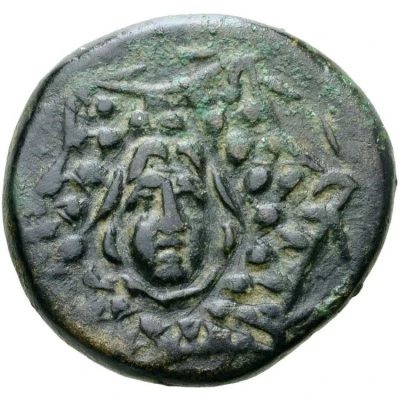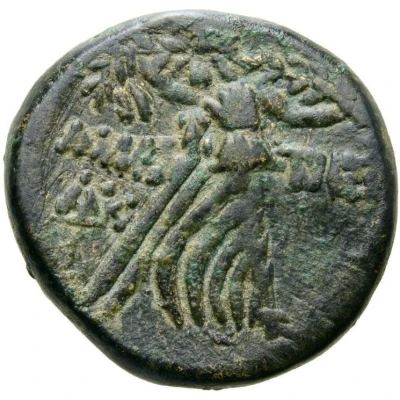


© Roma Numismatics Limited
Tetrachalkon 90 BC - 85 BC
| Bronze | 7.7 g | 21 mm |
| Issuer | Amastris (Paphlagonia) |
|---|---|
| King | Mithridates VI (Μιθριδάτης Εὐπάτωρ) (120 BC - 63 BC) |
| Type | Standard circulation coin |
| Years | 90 BC - 85 BC |
| Value | Tetrachalkon (1⁄12) |
| Currency | Drachm |
| Composition | Bronze |
| Weight | 7.7 g |
| Diameter | 21 mm |
| Shape | Round (irregular) |
| Technique | Hammered |
| Orientation | Variable alignment ↺ |
| Demonetized | Yes |
| Updated | 2024-10-10 |
| Numista | N#318626 |
|---|---|
| Rarity index | 87% |
Reverse
Nike advancing right holding wreath and palm, ΔΑΚ monogram in left field is one variant.
Script: Greek
Lettering: AMAΣ-TPIEΩΣ
Translation: Amastris
Interesting fact
The Tetrachalkon coin was used as a form of currency in the ancient Greek city of Amastris, which is now located in modern-day Turkey. The coin's name, Tetrachalkon, comes from the Greek words "tetra," meaning four, and "chalkos," meaning copper, referring to the coin's value, which was equivalent to four copper coins. This coin was issued during the reign of King Mithradates VI of Pontus, who ruled the kingdom of Pontus from 120 to 63 BC. The Tetrachalkon coin was an important part of the ancient Greek economy and was used for everyday transactions, such as buying goods and services.